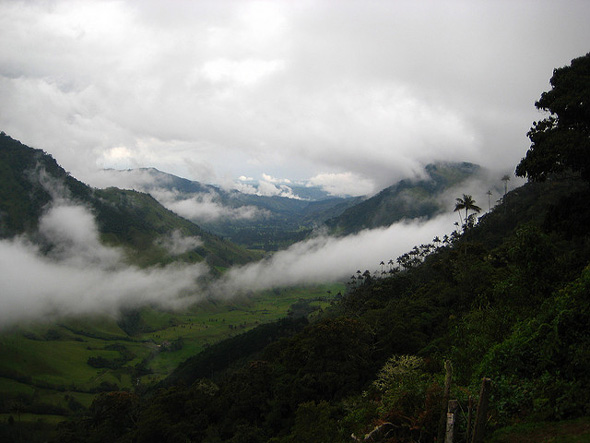-
Autumn Spanne, The Daily Climate
Colombia’s Unexplored Cloud Forests Besieged by Climate Change, Development
December 13, 2012 By Wilson Center Staff
The original version of this article, by Autumn Spanne, appeared on The Daily Climate.
Five hours by truck and mule from the nearest town, a rumbling generator cuts through the silent night to power large spotlights as botanists crouch and kneel on large blue tarps spread across a cow pasture. It’s nearly midnight, and the team works urgently to describe every detail of the dozens of colorful orchids, ferns, and other exotic plants they have collected that day in Las Orquídeas National Park, one of the single most biologically diverse places on the planet.
For nearly two weeks, each day begins and ends like this. At 6 a.m., the botanists emerge from their tents, just before the sun peeks over the mist covered mountains. They down a breakfast of cornmeal arepas and steaming bowls ofagua de panela, a local drink made from boiled sugar cane. Then they don their rain gear, cross the river on a dubious bridge made of a single log, and trudge along narrow, muddy trails before fanning out into the cloud forest.
Their mission: To collect as many species of flowering plants as possible and return to base camp before heavy afternoon rains swell the river to dangerous levels. They’re racing a different clock, too. Climate change and development are beginning to erase these irreplaceable ecosystems. The researchers are scrambling to understand what is here before it disappears.
The scientists are carrying out a three-year project, funded by the U.S. National Science Foundation, to create a comprehensive inventory of all the vascular plants in this park. It’s a considerable undertaking. At least 3,000 plant species – including the more than 200 species of orchid for which the park is named – are believed to inhabit Las Orquídeas. Potentially hundreds of plants have yet to be identified by science.
Biodiversity Hotspot
What makes this park in northwestern Colombia a global biodiversity hotspot is its location at the intersection of the Chocó and the Tropical Andes, two of the richest biogeographic regions in the world. But for the better part of two decades, Las Orquídeas, like many other ecologically important areas in Colombia, was largely off limits to scientists because portions of the park had become the unofficial territory of armed groups in the country’s decades-long conflict.
Continue reading on The Daily Climate.
Photo Credit: Cocora Valley, courtesy of flickr user kaspercarissa.
 A Publication of the Stimson Center.
A Publication of the Stimson Center.



